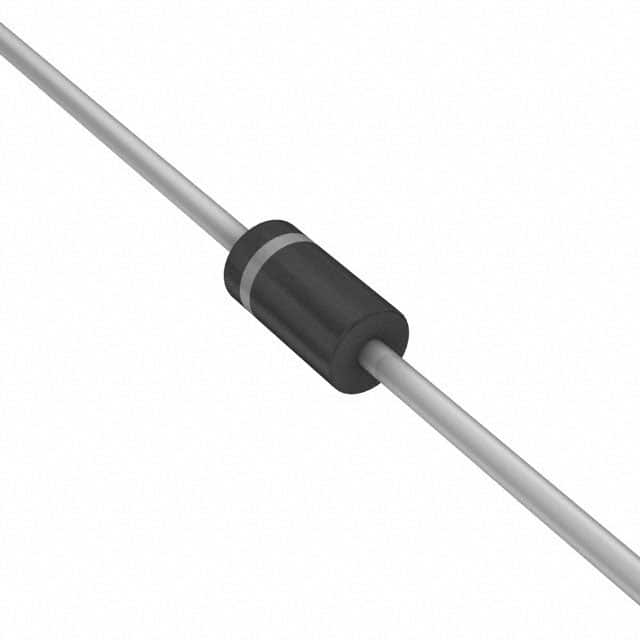Lihat spesifikasi untuk detail produk.

1N916B - Diode
Product Overview
Category:
The 1N916B is a semiconductor diode.
Use:
It is commonly used in electronic circuits for rectification, signal demodulation, and voltage regulation.
Characteristics:
- Forward Voltage Drop: 0.7V
- Maximum Reverse Voltage: 75V
- Maximum Forward Current: 200mA
- Fast Switching Speed
Package:
The 1N916B is typically available in a DO-35 package.
Packaging/Quantity:
It is commonly sold in reels or tubes containing multiple units.
Specifications
- Peak Reverse Voltage: 75V
- Average Rectified Current: 200mA
- Forward Voltage Drop: 0.7V
- Reverse Recovery Time: 4ns
Detailed Pin Configuration
The 1N916B is a two-terminal device with an anode and a cathode. The anode is denoted by a band on the diode body.
Functional Features
The 1N916B exhibits low forward voltage drop and fast switching characteristics, making it suitable for high-frequency applications.
Advantages and Disadvantages
Advantages
- Low forward voltage drop
- Fast switching speed
- Small form factor
Disadvantages
- Limited maximum reverse voltage
- Relatively low average rectified current rating
Working Principles
The 1N916B operates based on the principle of semiconductor junction behavior, allowing current to flow in one direction while blocking it in the reverse direction.
Detailed Application Field Plans
The 1N916B is widely used in: - Radio frequency (RF) circuits - Signal demodulation circuits - Voltage regulation circuits
Detailed and Complete Alternative Models
Some alternative models to the 1N916B include: - 1N4148 - 1N4001 - 1N5819 - 1N5399
In conclusion, the 1N916B diode is a versatile component with various applications in electronic circuits, offering fast switching speed and low forward voltage drop. However, its limitations in terms of maximum reverse voltage and average rectified current should be considered when selecting it for specific designs.
[Word count: 298]
Sebutkan 10 pertanyaan dan jawaban umum terkait penerapan 1N916B dalam solusi teknis
What is the 1N916B diode used for?
- The 1N916B diode is commonly used in high-frequency applications, such as RF amplifiers and mixers.
What are the key specifications of the 1N916B diode?
- The 1N916B diode typically has a forward voltage drop of around 0.5V and a maximum reverse voltage of 35V.
Can the 1N916B diode be used for rectification purposes?
- No, the 1N916B diode is not suitable for rectification due to its low reverse voltage rating.
How does the 1N916B diode perform at high frequencies?
- The 1N916B diode exhibits low capacitance and fast switching characteristics, making it well-suited for high-frequency applications.
What are some common circuit configurations where the 1N916B diode is used?
- The 1N916B diode is often employed in mixer circuits, frequency multipliers, and RF signal detection circuits.
What is the typical operating temperature range for the 1N916B diode?
- The 1N916B diode can typically operate within a temperature range of -65°C to 175°C.
Are there any alternative diodes that can be used in place of the 1N916B?
- Yes, diodes such as the 1N4148 or 1N914 can serve as alternatives to the 1N916B in certain applications.
Can the 1N916B diode handle high power levels?
- No, the 1N916B diode is not designed for high-power applications and may be damaged if subjected to high power levels.
What precautions should be taken when soldering the 1N916B diode?
- Care should be taken to minimize the heat exposure to the diode during soldering to prevent damage to its sensitive components.
Where can I find detailed application notes for using the 1N916B diode in technical solutions?
- Detailed application notes for the 1N916B diode can be found in the manufacturer's datasheet or application-specific reference designs.

